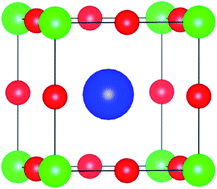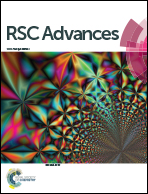Potential thermoelectric materials CsMI3 (M = Sn and Pb) in perovskite structures from first-principles calculations†
Abstract
The thermoelectric properties of halide perovskites CsMI3 (M = Sn and Pb) are investigated from a combination of first-principles calculations and semiclassical Boltzmann transport theory by considering both the electron and phonon transport. The electronic part is performed using a modified Becke and Johnson (mBJ) exchange potential, including spin–orbit coupling (SOC), while the phonon part is computed using generalized gradient approximation (GGA). It is found that SOC has remarkable detrimental effect on the n-type power factor, while it has a negligible influence on p-type doping, which can be explained by considering the effect of SOC on the conduction and valence bands. The calculated results show exceptionally low lattice thermal conductivities in CsSnI3 and CsPbI3, and the corresponding room-temperature lattice thermal conductivity is 0.54 W m−1 K−1 and 0.25 W m−1 K−1, which suggests that they may be potential thermoelectric materials. At 1000 K, the maximal figure of merit ZT is up to 0.63 and 0.64 for CsSnI3 and CsPbI3 with scattering time τ = 10−14 s, and the peak ZT is 0.49 and 0.41 with τ = 10−15 s. These results lead us to believe that CsMI3 (M = Sn and Pb) in perovskite structures may be potential thermoelectric materials.


 Please wait while we load your content...
Please wait while we load your content...